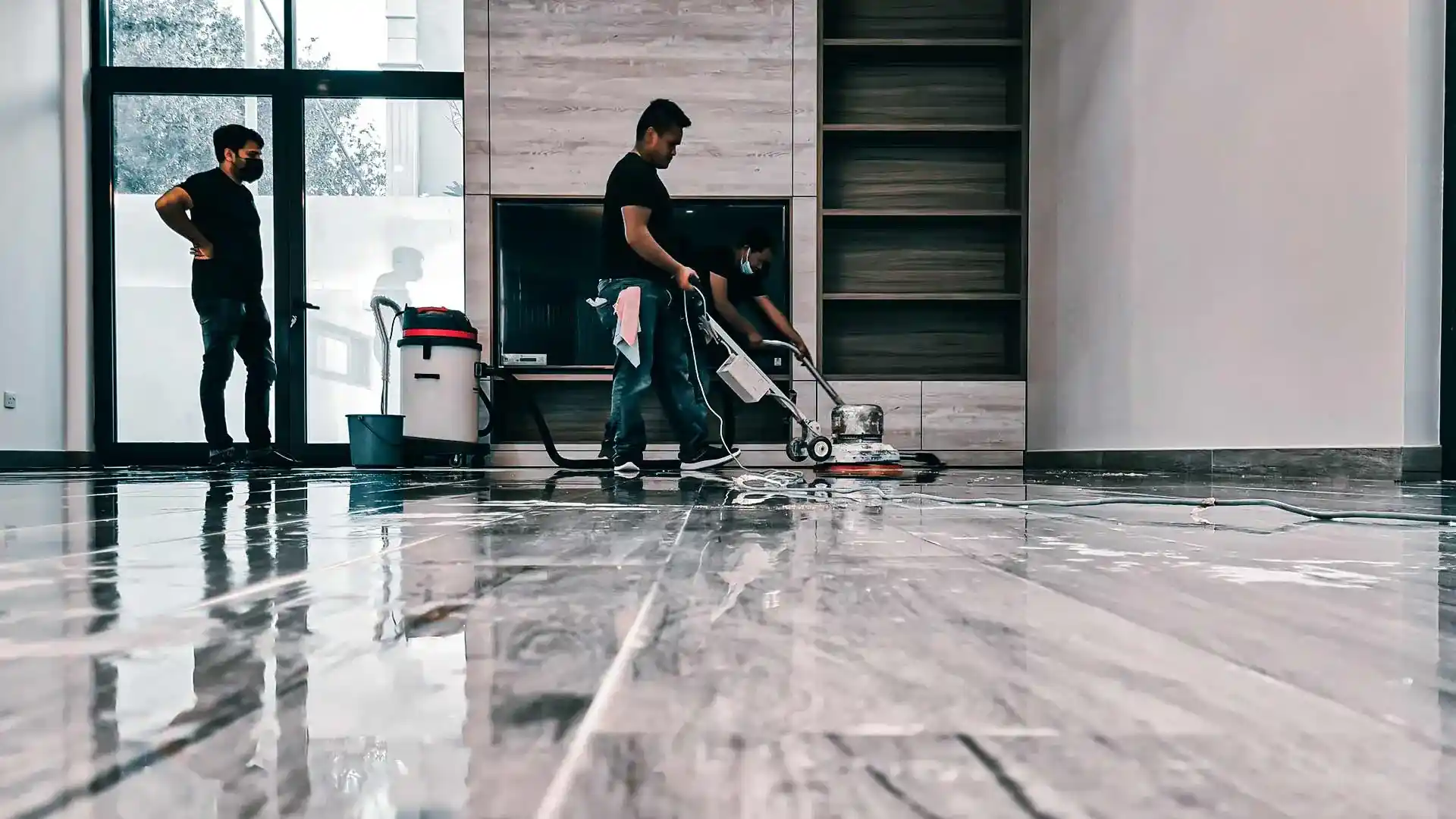Electrostatic cleaning is one of the most efficient methods of cleaning large surfaces in a fast and comprehensive way. This is not a conventional cleaning technique because charged particles are used to provide even coverage to all surfaces. Electrostatic sprayers are used in schools and offices, in hospitals and gyms, and continue to be a reliable option in combating germs and viruses. In this blog, we are going to discuss what electrostatic cleaning is, its advantages, applications, cost, and working principle.
What is Electrostatic Cleaning?
Electrostatic cleaning is a new form of cleaning and disinfecting, which involves the application of an evenly coated surface using electrically charged droplets. A sprayer gives the disinfectant solution a positive charge, and this causes the particles to stick on surfaces like a magnet. This is to make sure that it covers every section, including areas that are very difficult to access with a wiping cloth or spray.
It is used in places that require high hygienic standards, including hospitals, schools, fitness centers, transportation, and workplaces. Electrostatic cleaning is regarded as one of the most effective and safe cleaning methods today because it reduces cross-contamination and enhances efficiency.
How Electrostatic Sprayers Work
Electrostatic sprayers contain a special technology that enables them to apply an electrical charge to liquid disinfectant particles. Once these minute charged droplets are released into the atmosphere, they are naturally drawn to surfaces, like magnets to metal. This forms a coating of disinfectant that is smooth and even and adheres strongly to each contact point.
Since the particles are charged, they will not be floating or falling unevenly; they will enclose objects and cover corners, edges, and difficult-to-reach areas that ordinary spraying or wiping may miss.
The greatest benefit of this approach is that it offers full coverage without additional work. Standard cleaning usually involves wiping down every surface manually and may take some time, with areas still being missed.
Electrostatic spraying does not require direct contact, and thus it does not transmit germs as fast as direct contact, making it considerably faster. It is also particularly useful in big areas such as classrooms, gyms, and offices, where it would be hard and time-consuming to clean every single area manually.

Key Benefits of Electrostatic Cleaning
Electrostatic cleaning provides several advantages that make it better than traditional disinfecting methods.
- Charged droplets cover objects and coat all sides, even in tight corners.
- Large areas can be disinfected more quickly than with manual wiping.
- Less solution is wasted because the charged particles aim directly at surfaces.
- No wiping means less spreading of germs from one surface to another.
- It works well with EPA-approved disinfectants for killing bacteria and viruses.
Cost of Electrostatic Cleaning
The price of the electrostatic disinfection will be influenced by two primary factors: the size of the area to be covered and the kind of disinfectant solution in question. Generally, a cleaning company charges a rate between $0.07-$0.25 per square foot. This implies that the larger the space, the more expensive it will become.
Thus, smaller areas such as classrooms, clinics, or offices can typically range between $150 and 300 when cleaned once. Big spaces like warehouses, gymnasiums, or schools can run between $1,000 and $5,000 per session because they require more time, disinfectant, and equipment.
This method may cost more than regular cleaning, but over time, electrostatic spraying can save money. It minimizes waste of disinfectant, saves time, and provides better coverage. This allows for less frequent cleaning, and the results are more consistent. Therefore, it is a wise investment for places that need to stay clean and hygienic.
What Disinfectants Are Used in Electrostatic Sprayers?
The disinfectants applied to surfaces by electrostatic sprayers are hospital-grade and approved by the Environmental Protection Agency (EPA). This implies that they are tested and proven to be safe and effective when properly used. The disinfectants are considered to be strong enough to kill harmful germs like bacteria, viruses, and fungi, and hence they make them very reliable in keeping places safe and clean.
The most used disinfectants include:
- Quaternary ammonium compounds (Quats): It is a common compounds used in hospitals, schools, and offices due to their effectiveness and safety on most surfaces.
- Hydrogen peroxide solutions: Hydrogen peroxide solutions are commonly described as being eco-friendly and safe in most settings because they easily decompose into oxygen and water.
- Chlorine-based disinfectants: They are highly effective against germs and are usually applied in locations that require more serious cleaning, such as medical institutions.
- Alcohol-based disinfectants (in certain cases): They act rapidly as they destroy most kinds of germs and can be applied to smaller parts because they evaporate quickly.
Disinfectants need to be chosen based on facility type, kinds of germs, and the safety needs of the environment.

Uses of Electrostatic Sprayers Beyond Disinfection
The careful selection of a disinfectant is very important, and it should not only be environmentally friendly but also effective in killing the germs or pathogens you want to remove. The right disinfectant not only ensures proper cleaning but also protects people, pets, and surfaces from potential harmful effects.
Electrostatic sprayers are mainly used for disinfection, but they have many other uses. They can be used across various industries and situations because of their ability to cover surfaces evenly. For example:
- Spraying special deodorizing agents helps eliminate bad smells in places like gyms, hotels, restrooms, or transit vehicles.
- In agriculture, electrostatic sprayers are used to apply insecticides evenly to help protect crops from pests.
- They can apply fungicides in damp or humid environments to prevent mold growth before it starts.
- Used in kitchens, food storage areas, and processing plants to clean equipment and surfaces, ensuring food is safe and hygienic.
Due to their versatility, electrostatic sprayers are not just for hospitals or offices—they are useful in healthcare, education, hospitality, agriculture, and food industries, making them a smart investment for many businesses.
Electrostatic Cleaning vs Fogging: Which is Better?
Electrostatic sprayers and foggers are typical methods of disinfection, although they function differently. Fogging releases a mist of disinfectant out into the air, striking both the surfaces and those suspended in the air. On the other hand, electrostatic sprayers work directly by using charged droplets that adhere directly onto the surface, giving perfect coverage.
Electrostatic cleaning tends to be considered more efficient in disinfecting the surfaces since it ensures full contact with objects. Fogging, however, does not necessarily guarantee such coverage. Electrostatic sprayers are the best when it comes to targeted disinfection.
Conclusion
Electrostatic cleaning is an effective solution for disinfecting and protecting various spaces across Manhattan, New York. At BryeA+Cleaning, we use advanced electrostatic technology that charges disinfectant particles, ensuring they fully cover surfaces while cutting down on cleaning time and chemical waste. This makes it a smart choice for schools, hospitals, offices, and businesses throughout the city. Our team is based in Manhattan, New York, United States, and you can reach us at 929-600-6351 to schedule a service.
Compared to traditional cleaning and fogging, our electrostatic spraying provides better coverage and efficiency. Because it is safe, cost-effective, and versatile, electrostatic cleaning continues to be an essential tool for keeping environments in Manhattan healthy and protected.
FAQs
1. How much does electrostatic disinfection cost?
Electrostatic disinfection usually costs between $0.07 and $0.25 per square foot. Smaller spaces like offices may cost around $150 to $300. Larger buildings can cost several thousand dollars per session.
2. What are the benefits of electrostatic spraying?
The main benefits include faster cleaning, complete surface coverage, reduced cross-contamination, and less chemical waste. It works well in high-traffic areas where hygiene is vital.
3. What disinfectant to use in an electrostatic sprayer?
Electrostatic sprayers often use EPA-approved disinfectants like quats, hydrogen peroxide, or chlorine-based solutions. The choice depends on the pathogens you want to eliminate.
4. What is electrostatic disinfecting?
Electrostatic disinfecting is a cleaning method that uses electrically charged disinfectant particles. These particles are sprayed to ensure even coverage on all surfaces, including hard-to-reach areas.
5. What cleaner kills mycoplasma?
Disinfectants such as hydrogen peroxide, chlorine-based solutions, and quaternary ammonium compounds effectively kill mycoplasma when applied correctly using electrostatic spraying.
6. What else can you use an electrostatic sprayer for?
Besides disinfection, electrostatic sprayers can be used for odor control, pest control, mold prevention, and food safety applications in commercial and industrial settings.
7. Are electrostatic sprayers safe?
Yes, electrostatic sprayers are safe when used properly. Safety depends on the disinfectant being used, so it is important to follow product instructions and safety guidelines.
8. Which is better, a fogger or an electrostatic sprayer?
Electrostatic sprayers are better for surface disinfection since they provide full and even coverage. Foggers are more useful for air treatment but may not ensure thorough surface contact.








